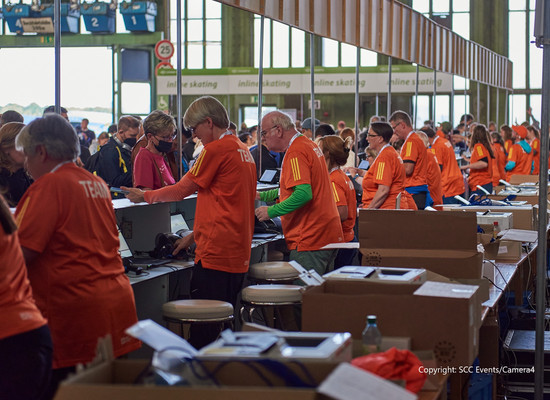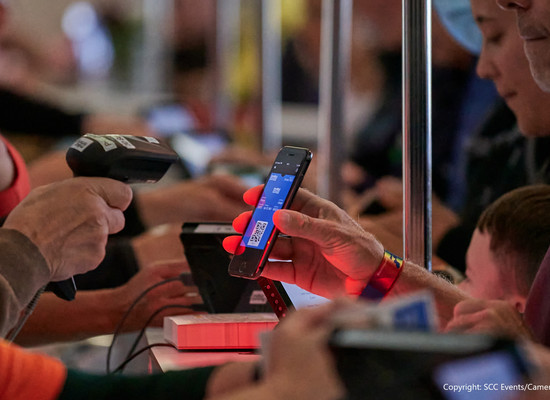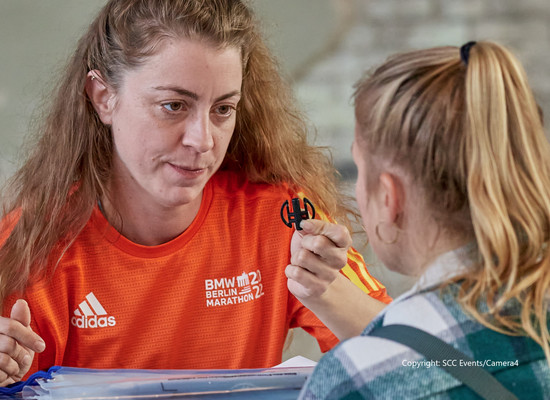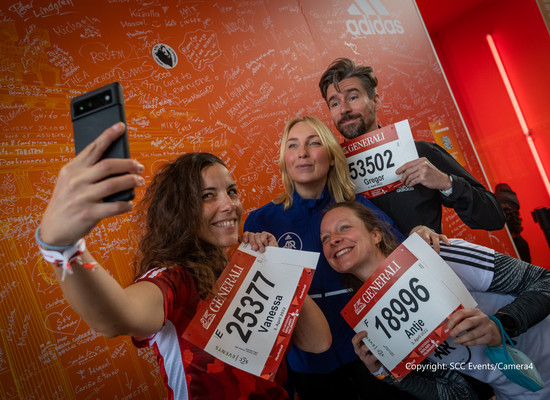
The bib number, the transponder and their impact on the ecological balance sheet
The start number. It has been worn ever since modern running competitions have existed. Photographs of the first modern Olympic Games in Athens in 1896 show that the athletes wore numbers on their chests that the judges could use to note the order in which they crossed the finish line. Also the assignment of the stopped times took place already at that time over the number.
Even today, participants in almost all running events pin a start number to their chest. Even if in the meantime the name is often written larger than the number. This makes it possible to cheer on everyone personally from the side of the course. The start number is the symbol behind which everyone rallies when it comes to covering a defined distance on time.
And this despite the fact that, from a technical point of view, it has long since ceased to be absolutely necessary. For a long time now, it has not been the numbers that have been decisive for official timekeeping, but the transponders that are linked to the personal data of the participants and clearly surpass even the most modern GPS watches in terms of accuracy. The timing system at running events determines when this transponder (and hopefully with it the right runner) crosses the start and finish line, and thus establishes the results of the participants. The start numbers are usually only used for control purposes.
The sustainable ChampionChip - a phase-out model
For many years, the most commonly used transponder at running events was a small, often yellow plastic piece - the ChampionChip. It was tied into the laces of the shoe and could be used again and again, so many runners bought it or borrowed it at events. Those who returned it after crossing the finish line also got their deposit money back. It had such a long life that hardly any ChampionChips ended up in the trash.
In recent years, however, transponders attached to the back of the race number have become increasingly popular. This is much more convenient for participants and organizers. The organizer buys bibs with transponders and distributes them to his runners, who pin them to their chests, run with them, and usually dispose of them at the finish line.
Convenient? Yes. Sustainable? Rather not. "Personally, I think it's quite a shame that further development of ChampionChip technology has been discontinued by the manufacturer," says Harald Mika, whose company Mika-Timing has used ChampionChip technology for decades to time events such as the BMW Berlin Marathon, as well as the World Marathon Majors in Boston and London and numerous other running events. From 2024, Mika-Timing will no longer use the ChampionChip, but will instead work with transponders attached to the bib number.
The problem with no-shows
The problem with this is that the organizers always have to have significantly more bib numbers and transponders on hand than are actually needed. After all, not everyone who has registered for a race actually takes part. At most events, all the bib numbers for the pre-registered runners are printed with the registration deadline and then delivered by the print shop to the bib distribution. Plus a number of numbers held for late registrations.
"At the BMW Berlin Marathon, we record about 10 percent of so-called 'no-shows' year after year. This refers to registered runners who do not pick up their starting documents," explains Christian Jost, managing director of SCC Events, whose company organizes two of the largest running events in Germany, the BMW Berlin Marathon and the Generali Berlin Half Marathon. With more than 40,000 registrations, that would mean about 4,000 bibs and transponders being produced for the trash can.
At the Berlin Marathon bib numbers are being printed live on site
In Berlin, however, this has not happened for a long time. More than ten years ago, they started printing out the race numbers only when the participant picks them up. With small decentralized printers at the start number distribution. "The idea was born over a beer in a Berlin pub," Christian Jost recalls of the conversation with Harald Mika, whose success story as a timekeeper is closely linked to the Berlin Marathon, "somehow we thought it would be cool to make the bib pick-up similar to the check-in at the airport, where at that time you also received your boarding pass mostly as a printout."
Initially, SCC Events and Mika-Timing were skeptical - among other things, because of the supposedly greater time effort that the printout would cause on site at the race number distribution. They feared long queues. But the concerns were quickly dispelled. "With the ever-increasing use of smartphones, on-site bib printing has become more and more established. Participants show the QR code they receive with their registration confirmation. The code is scanned, the race number is printed and the transponder linked to the number is stuck on. The whole thing takes just 15 seconds," says Harald Mika. In the meantime, the process is used at very many major events: At the major German marathons in Hanover, Hamburg and Frankfurt. At the World Marathon Majors race in London, but also in Vienna, Stockholm and Gothenburg, and even at the Swedish cross-country skiing legend, the Vasaloppet.
Bib printing right after check-in is the most sustainable solution
Research has also shown that the complete process of printing bibs on site is superior to printing with large machines and then transporting the numbers in terms of sustainability, energy consumption and carbon footprint. "The decisive factor here is that no start numbers are printed and stuck with transponders that subsequently end up in the trash unused," says Harald Mika.
After the ChampionChip was discontinued, however, the problem with the disposable transponders still remains. Harald Mika would much prefer an electronic solution with reusable transponders that combines convenience and sustainability. And he and his company are already working on solutions. Perhaps he should have another beer with Christian Jost in a Berlin pub ...



